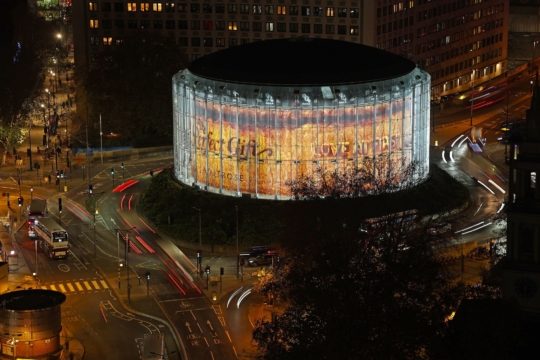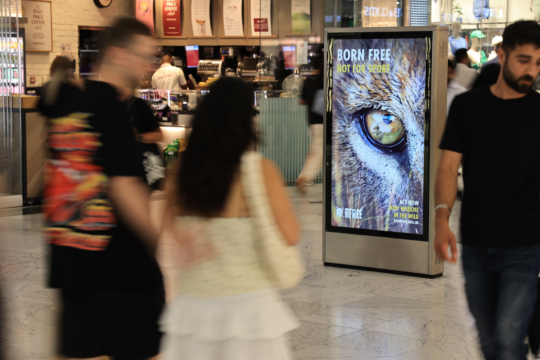
Skin care, make-up, fragrances and hair products – the beauty and cosmetics sector is fiercely competitive, and brands need to understand what modern consumers are motivated by to be successful.
According to Nielsen, the beauty and cosmetics category hits one of its natural media spend peaks during the Christmas build up. Therefore, our latest category focus, supported by research from our consumer panel @TheLocal and YouGov explains current trends, what consumers really want from their products, and how OOH can help cosmetic brands become front of mind in a booming beauty landscape.
What are the current trends?
Alternative high end products and getting the premium “feel”
With the cost-of-living crisis still biting and consumers wanting the best value for their money, a new growing popularity of alternative beauty products is challenging premium brands. These alternatives of premium products from high street stores are selling rapidly, as studies show 71% of Gen Z beauty consumers would buy cheaper versions of name-brand products.[1] For certain audiences, the high street can compete with luxury by advertising in premium destinations on our screens, with networks such as The Loop Network being crucial – targeting retail environments with high degrees of female shoppers and beauty enthusiasts.
Beauty needs to go green
There’s been a notable increase in eco-ethical claims within the beauty and cosmetics sector, with growing concerns over how the industry produces more than 120bn units of packaging every year globally.[2] Studies show 80% of consumers are willing to pay more for sustainably produced or sourced beauty products,[3] so there’s growing pressure for brands to be transparent about their sustainability claims. Consequently, DOOH can aid brands here as the most sustainable media channel, generating the lowest carbon emissions per impression at 3.5%.[4]
Consumers want to ‘try before they buy’
Four in five women aged 16+ said finding easy-to-use cosmetics products was a priority for them.[5] By offering sampling and other trial mechanics at in-person events, brands can appeal to the 73% of consumers who say they’re more likely to buy a product after sampling it, and to the 77% who say that sampling one product will make them more likely to buy more from that brand.[6] Our Below The Lights destination is already showing how effective these experiential events are. September’s L’Oréal event generated a total reach of 11m throughout the week long activation and 60 tracked media mentions, with an estimated average 72,129 views. It was the best week ever recorded for L’Oréal Paris in Boots Piccadilly Circus on value sales, with record sales during their 12 hour TikTok livestream on Piccadilly Lights, showing how Ocean Labs bring about tangible results.
How can TV and social media work with DOOH to amplify beauty brands?
Aligning OOH and social media ads makes sure your brand shows up in all the right places, to attract consumers looking for either high street or premium cosmetics.
Firstly, studies show 33% of makeup consumers aged 18-34 and 35% of those aged 25-34 bought an alternative product due to something they saw on social media.[7] Influencers are also crucial to the growth of beauty products – with paid tutorials across social channels posted daily, more than 60% of beauty consumers interact with an influencer at least once a day.[8] Couple all that with our Neuroscience part five research from last year, which showed that DOOH primes a brand’s social strategy, making consumers more likely to engage with their content.[9] The impact is even greater when an influencer posts a photo or video of an OOH ad, ensuring your brand and product is at the forefront of the consumers’ minds (and purchasing habits).
However, TV is the lead medium for fragrances alone. 57% of media share in the fragrance category is accounted for by TV so far this year.[10] Our recent research in partnership with Ebiquity showed that TV impact increases by as much as 35% when supported by OOH.[11] This presents an opportunity for beauty brands in Q4 who are currently spending little to nothing on OOH.
A main gift for Christmas
Nearly half of us (44%) will buy a new beauty product this festive season and 54% are looking to buy a fragrance as a Christmas gift.[12] With a natural media spend peak in the Christmas period, the beauty and cosmetics sector can harness the gifting period by using DOOH to capture consumers. It’s a prime time for engaging festive themed creative and copy.
To conclude…
Alongside social media, OOH can act as a brand’s “influencer”, being a trusted source which reaches a mass audience. Beauty brands should also leverage TV alongside OOH to work synonymously.
Brands need to be transparent about their sustainability. Despite economically challenging times, the majority of consumers will buy cosmetics from brands that align with their values.
Premium beauty as a category is becoming more accessible with alternative products which have the premium “feel”. Advertising on our screens in cherry-picked locations allows your brand full visibility in high spend shopping destinations.
[1] Circana’s 2023 Fragrance report
[2] The Industry.Beauty, 2024
[3] PWC 2024, Vouce of Consumer Survey
[4] Ocean Outdoor and Outsmart + KPMG, 2024
[5] Mintel UK Cosmetics Trends, 2024
[6] Whistl Logistics, 2024
[7] Retail Week ‘The Christmas Forecast’ 2024
[8] Rakuten Marketing, 2019
[9] NeuroInsight/Ocean Outdoor ‘DOOH – The Vital Ingredient’ 2022
[10] AdIntel Nielsen, 2024
[11] Ebiquity ‘Creating a better media world together – performance for today, branding for tomorrow’ 2023
[12] Kinetic ‘Alfresco Life’, 2024

![ROYAL NAVY, GUNWHARF QUAYS, DEC '25[9]](https://oceanoutdoor.s3.eu-west-2.amazonaws.com/website/wp-content/uploads/2025/12/ROYAL-NAVY-GUNWHARF-QUAYS-DEC-259-533x360.jpg)


